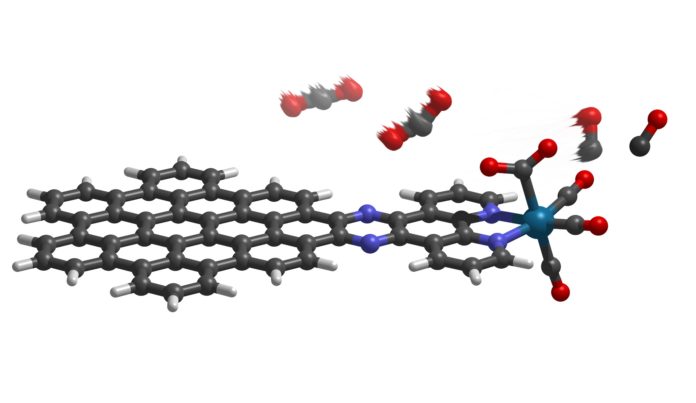One of the greatest threats to life on planet earth is global warming. After all, it leads to climate change, drier lands, shallower oceans, and lost species. For years, scientists have tried to stop this worldwide heating process by coming up with ways to bring down carbon dioxide levels in the atmosphere. Earlier this year scientists discovered how to make clean hydrogen fuel without emitting carbon-based greenhouse gases. More recently, they have come up with another solution to the global warming problem- the molecular leaf.
The molecular leaf was engineered by a group of international researchers from the University of Indiana, USA. The procedure the team used was recorded in the Journal of the American Chemical Society.
The chemists used a nanographene-rhenium complex compound connected using the organic compound bipyridine to create the molecule. “We utilized nanographene, a graphite carbon compound, because of its availability and its dark color,” Liang-shi Li, the associate professor in charge of the study, commented. “The dark nature of the material would allow it to absorb large amounts of solar energy.”
Though the energy-storage theory had been attempted before, no one had thought to create a molecule without a solar cell. The idea to link nanographene to the metal arose from Li’s earlier efforts to create a more efficient solar cell with the carbon-based material. “We asked ourselves: Could we cut out the middleman — solar cells – and use the light-absorbing quality of nanographene alone to drive the reaction?” he questioned1
The manner in which the molecule works was described in the chemical journal as follows. In this method, carbon monoxide is burned as a fuel, and the process generates vast amounts of energy as well as carbon dioxide gas. Since the carbon dioxide is unwanted, it has to be converted back to carbon monoxide to be used as fuel, a procedure which requires a lot of energy as well. The molecular leaf aids this process by absorbing power from solar radiation and electricity then supplying this absorbed energy for use in converting carbon dioxide back to carbon monoxide fuel. The molecular leaf in this way helps to recycle carbon dioxide to generate fuel by storing solar energy while preventing the elevation of carbon dioxide levels in the atmosphere.
Li adds that he now plans to focus on conducting further studies to replicate the leaf in non-liquid form.
The Implications of the Molecular Leaf
With the molecule in the market, industrialists can now rest easy because they would have a more sustainable way of obtaining carbon monoxide fuel from carbon dioxide. The use of the molecular leaf would mean lower overhead costs for them and increased overall production.
The molecular leaf would also aid in slowing down global warming because it would produce more of the carbon-neutral oxide in industrial processes.
As for research, the molecular leaf is a promising step toward the making highly efficient solar cells. The molecule could also be the first stage of carbon monoxide production for use in medical research projects such as in cancer treatment or cardiovascular disease amelioration.




